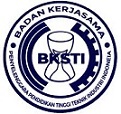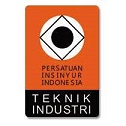Adapting Cloud Accounting As Creative Innovation And The Role Of Accountants In The Era Of Disruption
Abstract
Full Text:
PDFReferences
N. G. A. Pitria and L. P. Mahyuni, “Cloud Accounting Dan Disrupsi Pekerjaan Akuntan,” E-Jurnal Ekon. dan Bisnis Univ. Udayana, vol. 11, no. 06, p. 741, 2022, doi: 10.24843/eeb.2022.v11.i06.p10.
U. L. Nanda, G. Rismayani, and I. Rahayu, “Sosialisasi Perkembangan Karir Bidang Akuntansi Pada Era Digital Di Smk Mitra Batik Kota Tasikmalaya, Indonesia,” Empower. J. Pengabdi. Masy., vol. 3, no. 01, pp. 30–35, 2020, doi: 10.25134/empowerment.v3i01.2631.
Z. Jan et al., “Artificial intelligence for industry 4.0: Systematic review of applications, challenges, and opportunities,” Expert Syst. Appl., vol. 216, p. 119456, 2023, doi: https://doi.org/10.1016/j.eswa.2022.119456.
Agyztia Premana, Gian Fitralisma, Andi Yulianto, M. Badruz Zaman, and M. A. Wiryo, “Pemanfaatan Teknologi Informasi Pada Pertumbuhan Ekonomi Dalam Era Disrupsi 4.0,” J. Econ. Manag., vol. 2, no. 2, pp. 1–6, 2020, doi: 10.46772/jecma.v1i01.219.
L. Soltanisehat, R. Alizadeh, H. Hao, and K.-K. R. Choo, “Technical, temporal, and spatial research challenges and opportunities in blockchain-based healthcare: A systematic literature review,” IEEE Trans. Eng. Manag., vol. 70, no. 1, pp. 353–368, 2020.
S. Rani, P. Bhambri, and A. Kataria, “Integration of IoT, Big Data, and Cloud Computing Technologies: Trend of the Era,” in Big Data, Cloud Computing and IoT, Chapman and Hall/CRC, 2023, pp. 1–21.
A. Katal, S. Dahiya, and T. Choudhury, “Energy efficiency in cloud computing data centers: a survey on software technologies,” Cluster Comput., vol. 26, no. 3, pp. 1845–1875, 2023.
R. Gu and L. Zhou, “Financial Decision Management of Enterprise Cloud Accounting Based on Big Data Technology,” Appl. Math. Nonlinear Sci., vol. 9, no. 1, pp. 1–16, 2024, doi: 10.2478/amns.2023.2.01070.
A. M. Ikotun, A. E. Ezugwu, L. Abualigah, B. Abuhaija, and J. Heming, “K-means clustering algorithms: A comprehensive review, variants analysis, and advances in the era of big data,” Inf. Sci. (Ny)., vol. 622, pp. 178–210, 2023, doi: https://doi.org/10.1016/j.ins.2022.11.139.
Amir Hamzah, Dadang Suhendar, and Agus Zainul Arifin, “Factors Affecting Cloud Accounting Adoption In SMEs,” J. Akunt., vol. 27, no. 3, pp. 442–464, 2023, doi: 10.24912/ja.v27i3.1520.
M. Saad et al., “Assessing the Intention to Adopt Cloud Accounting during COVID-19,” Electron., vol. 11, no. 24, pp. 1–19, 2022, doi: 10.3390/electronics11244092.
A. M. Musyaffi, M. C. Oli, and B. Afriadi, “Drivers of Student Technology Readiness in Using Cloud Accounting to Improve Student Performance,” Int. J. Inf. Educ. Technol., vol. 13, no. 8, pp. 1169–1176, 2023, doi: 10.18178/ijiet.2023.13.8.1918.
V. V. Stipić and M. Vičić, “An analysis of accountants ’ resistance to cloud accounting,” J. Econ. Bus. Issues, vol. 2, no. 2, pp. 15–23, 2022.
S. Zebua and R. Widuri, “Analysis of Factors Affecting Adoption of Cloud Accounting in Indonesia,” J. Theor. Appl. Inf. Technol., vol. 101, no. 1, pp. 86–105, 2023.
A. Ihksan et al., Studi Literatur (Systematic, Narrative, Scoping, Argumentative, Theoritical), vol. 1. 2023.
E. J. Martins and F. P. Belfo, “Major concerns about Enterprise Resource Planning (ERP) systems: A systematic review of a decade of research (2011-2021),” Procedia Comput. Sci., vol. 219, pp. 378–387, 2023, doi: 10.1016/j.procs.2023.01.303.
L. L. O’Mahoney et al., “The prevalence and long-term health effects of Long Covid among hospitalised and non-hospitalised populations: A systematic review and meta-analysis,” eClinicalMedicine, vol. 55, no. December 2022, pp. 1–10, 2023, doi: 10.1016/j.eclinm.2022.101762.
M. R. W. Hiebl, “Sample Selection in Systematic Literature Reviews of Management Research,” Organ. Res. Methods, vol. 26, no. 2, pp. 229–261, 2023, doi: 10.1177/1094428120986851.
M. A. Kuhail, N. Alturki, S. Alramlawi, and K. Alhejori, Interacting with educational chatbots: A systematic review, vol. 28, no. 1. Springer US, 2023.
F. D. Lombi, H. Haliah, N. Nirwana, and M. A. Fahdal Imran Oemar, “Application of Value for Money in Assessing Performance in Public Sector Hospitals: a Systematic Literature Review,” J. Ekon. Ichsan Sidenreng Rappang, vol. 1, no. 02, pp. 57–71, 2022, doi: 10.61912/jeinsa.v1i02.12.
C. Chiang, T. Kou, and T. Koo, “Tinjauan Literatur Sistematis Sistem Manajemen Rantai Pasokan Berbasis TI : Menuju Model Manajemen Rantai Pasokan Berkelanjutan,” 2021.
L. Susanti, L. Tania, H. W. Komala, and C. Meiden, “Pemetaan Bibliometrik terhadap Social Theory pada Bidang Akuntansi Menggunakan VOSviewer,” J. Ekobistek, vol. 11, pp. 272–277, 2022, doi: 10.35134/ekobistek.v11i4.393.
O. I. Tawfik, O. Durrah, K. Hussainey, and H. E. Elmaasrawy, “Factors influencing the implementation of cloud accounting: evidence from small and medium enterprises in Oman,” J. Sci. Technol. Policy Manag., vol. 14, no. 5, pp. 859–884, 2023, doi: 10.1108/JSTPM-08-2021-0114.
N. D. Akai, N. Ibok, and P. E. Akinninyi, “Cloud Accounting and the Quality of Financial Reports of Selected Banks in Nigeria,” Eur. J. Accounting, Audit. Financ. Res., vol. 11, no. 9, pp. 18–42, 2023, doi: 10.37745/ejaafr.2013/vol11n91842.
F. Marsintauli, E. Novianti, R. P. Situmorang, and F. D. F. Djoniputri, “An analysis on the implementation of cloud accounting to the accounting process,” Accounting, vol. 7, no. 4, pp. 747–754, 2021, doi: 10.5267/j.ac.2021.2.010.
A. Setiawan, P. Praptiningsih, and N. Matondang, “Studi Literatur tentang Cloud Accounting,” Equity, vol. 23, no. 2, pp. 189–200, 2020, doi: 10.34209/equ.v23i2.2236.
M. Kartikasary, A. Wicaksono, Laurens, and Juvenia, “Cloud Accounting Application Program Analysis in Micro, Small, and Medium Business in Indonesia,” E3S Web Conf., vol. 388, 2023, doi: 10.1051/e3sconf/202338803022.
H. Xu, J. Ge, and L. Tong, “Application of cloud accounting in enterprise financial forecasting and decision making in the era of big data,” Appl. Math. Nonlinear Sci., vol. 8, no. 1, pp. 3095–3110, 2023, doi: 10.2478/amns.2023.1.00024.
M. M. Mariani, I. Machado, V. Magrelli, and Y. K. Dwivedi, “Artificial intelligence in innovation research: A systematic review, conceptual framework, and future research directions,” Technovation, vol. 122, no. August 2022, p. 102623, 2023, doi: 10.1016/j.technovation.2022.102623.
A. M. Musyaffi and M. Arinal, “Critical Factors of Cloud Accounting Acceptance and Security for Prospective Accountants: Tam Extension,” J. Ris. Akunt. Kontemporer, vol. 13, no. 1, pp. 1–6, 2021, doi: 10.23969/jrak.v13i1.3267.
H. Wu, Y. Wu, and J. Zhang, “Risk assessment modeling with application in the accounting cloud-service industry,” Expert Syst. Appl., vol. 229, no. PA, p. 120526, 2023, doi: 10.1016/j.eswa.2023.120526.
P. Chandra and A. Gupta, “Transformation of Conventional to Digital Accounting: an Overview of Cloud Accounting,” JETIR2212055 J. Emerg. Technol. Innov. Res., vol. 9, no. December, 2022, doi: 10.6084/m9.jetir.JETIR2212055.
S. Bariyyah, A. Okfitasari, and E. Meikhati, “Profesi Akuntan Di Era New Normal,” J. Bisnis Manaj. dan Akunt., vol. 1, no. 1, pp. 8–14, 2021, doi: 10.47701/bismak.v1i1.1182.
D. Ma, R. Fisher, and T. Nesbit, “Cloud-based client accounting and small and medium accounting practices: Adoption and impact,” Int. J. Account. Inf. Syst., vol. 41, no. 2021, p. 100513, 2021, doi: 10.1016/j.accinf.2021.100513.
A. Igou, D. J. Power, S. Brosnan, and C. Heavin, “Digital Futures for Accountants,” J. Emerg. Technol. Account., vol. 20, no. 1, pp. 39–57, May 2023, doi: 10.2308/JETA-2020-088.
S. Putu and S. Made, “Vol 2 No 1 (2020): Paulus Journal of Accounting (PJA),” vol. 2, no. 1, pp. 40–55, 2020.
E. Al-Nsour, S. Weshah, and A. Dahiyat, “Cloud accounting information systems: Threats and advantages,” Accounting, vol. 7, no. 4, pp. 875–882, 2021, doi: 10.5267/j.ac.2021.1.021.
S. Salem, N. Nurdayadi, and A. Alfiandri, “Cloud Accounting : The Development of Accounting Information System in Industry 4.0 in Indonesia,” Conf. Ser., vol. 3, no. 2, pp. 282–294, 2021, doi: 10.34306/conferenceseries.v3i2.597.
J. Praful Bharadiya, “A Comparative Study of Business Intelligence and Artificial Intelligence with Big Data Analytics,” Am. J. Artif. Intell., no. July, 2023, doi: 10.11648/j.ajai.20230701.14.
P. Database and D. I. Universitas, “H i d m a d,” vol. 7, pp. 1–9.
M. Perilaku, A. Klub, and M. Di, “Jurnal maneksi vol 9, no. 1, juni 2020,” vol. 9, no. 1, pp. 310–316, 2020.
DOI: http://dx.doi.org/10.24014/jti.v10i1.29307
Refbacks
- There are currently no refbacks.
Copyright (c) 2024 Ni Gusti Ayu Pitria, Haliah Haliah Haliah, Nirwana Nirwana Nirwana

This work is licensed under a Creative Commons Attribution-NonCommercial-ShareAlike 4.0 International License.
Jurnal Teknik Industri
P-ISSN 2460-898X | E-ISSN 2714-6235
Published by:
Industrial Engineering Department
Universitas Islam Negeri Sultan Syarif Kasim Riau, Indonesia
Office Address:
H.R. Soebrantas KM 15.5, Tampan, Pekanbaru, Riau, Indonesia 28293
email: jti.fst@uin-suska.ac.id
Indexed by:
JTI : Jurnal Teknik Industri under a Creative Commons Attribution-NonCommercial-ShareAlike 4.0 International License.

















